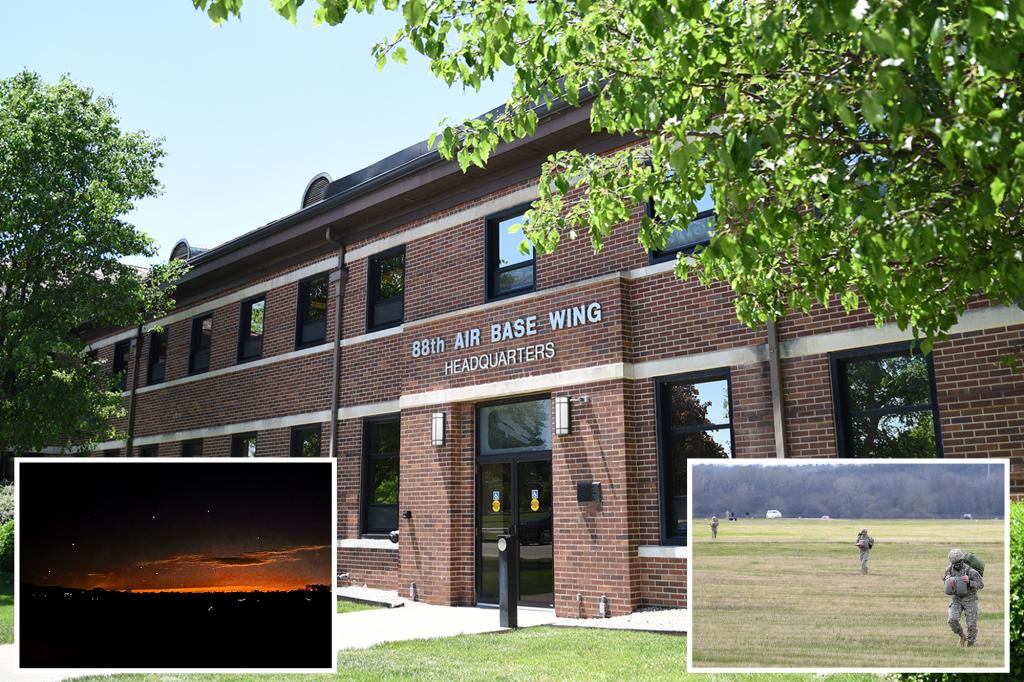The recent closure of airspace over Wright-Patterson Air Force Base in Ohio due to unidentified drones highlights growing concerns about the security implications of these unmanned aerial systems (UAS). The incident, which occurred late Friday into early Saturday, involved multiple drones of varying sizes and configurations prompting a four-hour shutdown of the base’s airspace. While base officials confirmed the incursion and stressed that no personnel, facilities, or assets were impacted, the incident underscores the vulnerability of critical infrastructure to drone activity. The lack of immediate information from the Department of Defense further amplifies the anxiety surrounding these events. This occurrence is not isolated; it follows a pattern of similar drone sightings near military installations and other sensitive locations, both domestically and internationally, raising serious questions about national security and the potential for espionage or disruption.
The surge in drone activity, particularly over New Jersey, has alarmed residents and officials alike. Reports of drones near Naval Weapons Station Earle and Picatinny Arsenal, a US Army research and development facility, have prompted heightened security measures, including temporary flight restrictions. The pervasiveness of these sightings and the often-unidentified nature of the drones raise concerns about their purpose and origin. These incidents are not confined to the East Coast; similar reports have emerged from overseas US military bases in Germany and Britain. The recurring nature of these incidents, coupled with the lack of clear identification of the drones or their operators, creates an atmosphere of uncertainty and underscores the need for robust counter-drone measures.
The incident at Wright-Patterson Air Force Base is particularly concerning given its strategic importance. The base houses key Air Force commands, including the Air Force Research Lab, which focuses on protecting against technological warfare, and the Air Force Materiel Command, responsible for research, development, testing, and logistics support of Air Force weapon systems. Additionally, the National Air and Space Intelligence Center, tasked with identifying air, space, and cyber threats, is also located at Wright-Patterson. The presence of these crucial organizations underscores the potential impact of drone incursions on national security. The ability of unidentified drones to penetrate the airspace of such a sensitive facility raises questions about the effectiveness of current security protocols and highlights the need for enhanced surveillance and counter-drone technologies.
The ongoing drone incidents have prompted calls for government action. Governor Kathy Hochul of New York, following a drone-related shutdown at Stewart International Airport, urged federal intervention. The demand for action reflects the growing frustration and concern over the seemingly unchecked drone activity and the potential risks it poses. While the federal government has yet to provide definitive answers or implement widespread solutions, the urgency of the situation is undeniable. The repeated incursions into sensitive airspace, coupled with the unknown motives of the drone operators, necessitate a swift and decisive response from federal authorities.
However, the official response to the escalating drone activity has been varied and, at times, dismissive. While some officials acknowledge the potential threat, others, including the national security adviser, have downplayed the incidents, suggesting misidentification of conventional aircraft. This divergence in perspectives underscores the complexity of the issue and the challenges in addressing it effectively. The lack of a unified approach within the government hampers efforts to develop comprehensive strategies for managing drone threats. The apparent downplaying of the situation by some officials also fuels public anxiety and raises questions about the government’s commitment to addressing the issue seriously.
While the exact nature and purpose of these drone incursions remain largely unknown, their potential to disrupt operations, gather intelligence, or even carry out malicious acts cannot be ignored. The increasing frequency and sophistication of these incidents underscore the need for a coordinated and comprehensive response from both the government and private sector. This includes developing more effective counter-drone technologies, strengthening security protocols around critical infrastructure, and implementing clearer regulations regarding drone usage. The current patchwork of responses and the lack of a unified national strategy leave the US vulnerable to potential threats and underscore the urgency of addressing this emerging security challenge.

